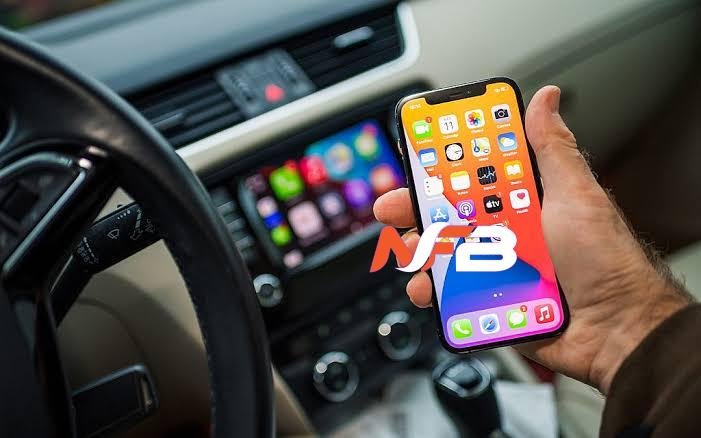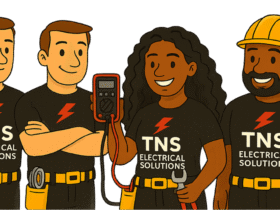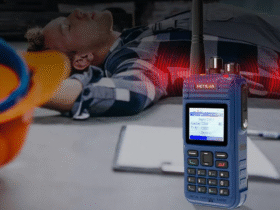In today’s fast-paced world, where time is precious and distractions are everywhere, a smarter driving experience can make all the difference. CarPlay, Apple’s in-car interface, has revolutionized the way we interact with our vehicles, offering seamless integration between your iPhone and your car’s infotainment system. Whether you’re using a built-in Apple CarPlay screen, a portable Apple CarPlay device, or even an Android Auto screen, there are numerous ways to make your driving experience safer, more efficient, and more enjoyable.
In this article, we’ll explore some of the best tips and tricks for getting the most out of your CarPlay setup, regardless of the type of system you have. These insights will help you unlock the full potential of your Apple CarPlay screen for car and enhance your overall driving experience.
1. Customize Your Home Screen for Easy Access
One of the most useful features of CarPlay is the ability to customize your home screen. By rearranging apps and placing your most frequently used ones at the forefront, you can reduce the time spent navigating through menus. This is especially important when you’re on the road and need quick access to navigation, music, or communication apps.
To customize your Apple CarPlay screen, go to the Settings app on your iPhone, select “General,” then “CarPlay,” and choose your vehicle. From there, you can drag and drop apps to rearrange them or remove any that you don’t need. This way, your most essential apps are always within reach, minimizing distractions and keeping your focus on the road.
2. Make Use of Siri for Hands-Free Control
Siri is your best friend when it comes to hands-free control in CarPlay. Whether you’re using a car radio CarPlay system or a portable Apple CarPlay device, Siri can help you stay connected without taking your hands off the wheel. You can ask Siri to send messages, make calls, get directions, play music, or even search for nearby points of interest.
To activate Siri, simply press and hold the voice command button on your steering wheel or tap the Siri icon on your Apple CarPlay screen for car. This voice-activated assistant is especially useful for staying focused on the road while managing your daily tasks.
For Android users, Google Assistant offers similar functionality on an Android Auto screen. You can use voice commands to control apps, send texts, and navigate—all while keeping your eyes on the road.
3. Use Do Not Disturb While Driving Mode
One of the most effective ways to minimize distractions is by enabling Do Not Disturb While Driving mode. This feature is designed to keep you focused by silencing notifications and automatically sending replies to incoming messages, letting people know that you’re on the road.
To activate this feature, go to your iPhone’s Settings app, select “Do Not Disturb,” and choose the option to enable it when connected to your car’s Bluetooth or when driving. This feature works seamlessly with your Apple CarPlay screen and ensures that your drive is as distraction-free as possible.
If you’re using an Android car head unit, Android Auto offers a similar feature called Driving Mode, which can be enabled to minimize distractions while driving.
4. Take Advantage of Apple Maps’ Real-Time Features
Apple Maps has come a long way since its initial release and is now a reliable navigation tool with real-time features that enhance your driving experience. When using an Apple CarPlay screen for car, you can benefit from turn-by-turn directions, traffic updates, and route suggestions based on current conditions.
One of the best tricks is to use Apple Maps in conjunction with Siri for a fully hands-free experience. Simply ask Siri for directions, and your Apple CarPlay screen will display the route, while Siri provides voice-guided instructions.
For Android users, Google Maps on an Android Auto screen offers similar real-time features, including live traffic updates, alternate routes, and lane guidance.
5. Streamline Your Music and Entertainment
Music and entertainment are integral parts of any drive, and CarPlay makes it easy to access your favorite tunes and podcasts. Whether you prefer Apple Music, Spotify, or another streaming service, you can easily control playback through your Apple CarPlay screen.
One useful trick is to create playlists specifically for driving. These can include your favorite songs, audiobooks, or podcasts, ensuring that you always have something enjoyable to listen to on the road. You can also ask Siri to play specific songs or playlists, making it easy to switch up your music without taking your eyes off the road.
If you’re using a portable Apple CarPlay device, make sure it’s properly connected and configured to your car’s audio system for the best sound quality. For Android users, similar functionality is available through Google Play Music or Spotify on an Android Auto screen.
6. Maximize Your Communication Capabilities
Staying connected while driving is essential, but safety should always come first. CarPlay offers several features to help you communicate without compromising your focus. You can use Siri to send and receive text messages, make phone calls, and even read your messages aloud, all while keeping your hands on the wheel.
For example, if you receive a message while driving, Siri can read it aloud and allow you to dictate a response. This hands-free communication ensures that you stay connected without taking unnecessary risks.
For those using a car radio CarPlay setup, these communication features are seamlessly integrated, making it easy to stay in touch with friends, family, and colleagues while on the road. Android Auto users can take advantage of similar features with Google Assistant.
7. Explore Third-Party Apps for Enhanced Functionality
CarPlay supports a wide range of third-party apps that can enhance your driving experience. From navigation apps like Waze to messaging apps like WhatsApp, there are numerous options available that can be added to your Apple CarPlay screen.
One of the best tips is to explore the App Store for apps that are CarPlay-compatible and relevant to your needs. For example, if you frequently travel for work, you might find apps like Zoom or Microsoft Teams useful for staying connected during long drives. Similarly, if you’re a podcast enthusiast, apps like Overcast or Pocket Casts can provide a more tailored listening experience.
For Android users, many of these third-party apps are also available on the Android Auto screen, providing similar functionality.
8. Keep Your CarPlay System Updated
To ensure that you’re getting the best experience with CarPlay, it’s important to keep your system updated. Apple frequently releases updates that improve functionality, add new features, and enhance security. These updates are usually installed automatically when you update your iPhone, but it’s always a good idea to check for the latest version.
For those using a portable Apple CarPlay device, make sure that the firmware is up to date. You can usually do this by connecting the device to your computer and following the manufacturer’s instructions. Similarly, if you have an Android car head unit, keeping the software up to date will ensure optimal performance and compatibility with the latest apps.
9. Optimize Your Settings for a Personalized Experience
CarPlay offers a variety of settings that can be customized to suit your preferences. For example, you can adjust the display settings on your Apple CarPlay screen to change the appearance of icons, enable night mode, or adjust the volume levels for different types of audio.
Another useful setting is the ability to control the order in which notifications are displayed. By prioritizing important notifications, such as navigation alerts or incoming calls, you can ensure that you’re not overwhelmed by less relevant information while driving.
Android Auto users can also customize their Android car head unit to personalize the driving experience, from adjusting display settings to configuring audio preferences.
10. Troubleshoot Common Issues with Ease
Like any technology, CarPlay can sometimes experience issues, but most of these can be easily resolved with a few troubleshooting steps. Common problems include connectivity issues, apps not displaying properly, or audio problems.
If you’re experiencing issues with your Apple CarPlay screen, the first step is to check your iPhone’s settings and ensure that CarPlay is enabled. You can also try restarting your iPhone or resetting your vehicle’s infotainment system.
For those using a portable Apple CarPlay device, make sure that all cables are securely connected and that the device’s firmware is up to date. If problems persist, consult the manufacturer’s troubleshooting guide or contact customer support for assistance.
Android Auto users can troubleshoot common issues by checking the settings on their Android car head unit or by restarting their device.
Drive Smarter with CarPlay
CarPlay has transformed the driving experience, making it safer, more convenient, and more enjoyable. By following these tips and tricks, you can get the most out of your Apple CarPlay screen for car or portable Apple CarPlay device, ensuring that your drives are as smooth and efficient as possible.
Whether you’re an Apple user or an Android enthusiast with an Android Auto screen, these strategies will help you unlock the full potential of your in-car system. From customizing your home screen to maximizing your communication capabilities, CarPlay offers a wide range of features designed to enhance every aspect of your drive.
As technology continues to evolve, staying updated with the latest features and apps will ensure that your car radio CarPlay or Android car head unit remains a powerful tool for smarter, safer driving. So take the time to explore these tips, and enjoy the benefits of a more intelligent driving experience with CarPlay.















Leave a Reply